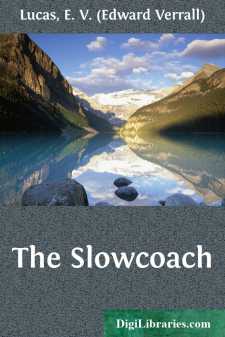Categories
- Antiques & Collectibles 13
- Architecture 36
- Art 48
- Bibles 22
- Biography & Autobiography 816
- Body, Mind & Spirit 145
- Business & Economics 28
- Children's Books 17
- Children's Fiction 14
- Computers 4
- Cooking 94
- Crafts & Hobbies 4
- Drama 346
- Education 58
- Family & Relationships 59
- Fiction 11834
- Foreign Language Study 3
- Games 19
- Gardening 17
- Health & Fitness 34
- History 1378
- House & Home 1
- Humor 147
- Juvenile Fiction 1873
- Juvenile Nonfiction 202
- Language Arts & Disciplines 89
- Law 16
- Literary Collections 686
- Literary Criticism 179
- Mathematics 13
- Medical 41
- Music 40
- Nature 179
- Non-Classifiable 1768
- Performing Arts 7
- Periodicals 1453
- Philosophy 66
- Photography 2
- Poetry 897
- Political Science 203
- Psychology 45
- Reference 154
- Religion 516
- Science 126
- Self-Help 85
- Social Science 82
- Sports & Recreation 34
- Study Aids 3
- Technology & Engineering 59
- Transportation 23
- Travel 463
- True Crime 29
Our website is made possible by displaying online advertisements to our visitors.
Please consider supporting us by disabling your ad blocker.
A Wanderer in Venice
Description:
Excerpt
CHAPTER I
THE BRIDE OF THE ADRIATIC
The best approach to Venice—Chioggia—A first view—Another water approach—Padua and Fusina—The railway station—A complete transformation—A Venetian guide-book—A city of a dream.
I have no doubt whatever that, if the diversion can be arranged, the perfect way for the railway traveller to approach Venice for the first time is from Chioggia, in the afternoon.
Chioggia is at the end of a line from Rovigo, and it ought not to be difficult to get there either overnight or in the morning. If overnight, one would spend some very delightful hours in drifting about Chioggia itself, which is a kind of foretaste of Venice, although not like enough to her to impair the surprise. (But nothing can do that. Not all the books or photographs in the world, not Turner, nor Whistler, nor Clara Montalba, can so familiarize the stranger with the idea of Venice that the reality of Venice fails to be sudden and arresting. Venice is so peculiarly herself, so exotic and unbelievable, that so far from ever being ready for her, even her residents, returning, can never be fully prepared.)
But to resume—Chioggia is the end of all things. The train stops at the station because there is no future for it; the road to the steamer stops at the pier because otherwise it would run into the water. Standing there, looking north, one sees nothing but the still, land-locked lagoon with red and umber and orange-sailed fishing-boats, and tiny islands here and there. But only ten miles away, due north, is Venice. And a steamer leaves several times a day to take you there, gently and loiteringly, in the Venetian manner, in two hours, with pauses at odd little places en route. And that is the way to enter Venice, because not only do you approach her by sea, as is right, Venice being the bride of the sea not merely by poetical tradition but as a solemn and wonderful fact, but you see her from afar, and gradually more and more is disclosed, and your first near view, sudden and complete as you skirt the island of S. Giorgio Maggiore, has all the most desired ingredients: the Campanile of S. Marco, S. Marco's domes, the Doges' Palace, S. Theodore on one column and the Lion on the other, the Custom House, S. Maria della Salute, the blue Merceria clock, all the business of the Riva, and a gondola under your very prow.
That is why one should come to Venice from Chioggia.
The other sea approach is from Fusina, at the end of an electric-tram line from Padua. If the Chioggia scheme is too difficult, then the Fusina route should be taken, for it is simplicity itself. All that the traveller has to do is to leave the train at Padua overnight—and he will be very glad to do so, for that last five-hour lap from Milan to Venice is very trying, with all the disentanglement of registered luggage at the end of it before one can get to the hotel—and spend the next morning in exploring Padua's own riches: Giotto's frescoes in the Madonna dell'Arena; Mantegna's in the Eremitani; Donatello's altar in the church of Padua's own sweet Saint Anthony; and so forth; and then in the afternoon take the tram for Fusina. This approach is not so attractive as that from Chioggia, but it is more quiet and fitting than the rush over the viaduct in the train. One is behaving with more propriety than that, for one is doing what, until a few poor decades ago of scientific fuss, every visitor travelling to Venice had to do: one is embarked on the most romantic of voyages: one is crossing the sea to its Queen.
This way one enters Venice by her mercantile shipping gate, where there are chimneys and factories and a vast system of electric wires. Not that the scene is not beautiful; Venice can no more fail to be beautiful, whatever she does, than a Persian kitten can; yet it does not compare with the Chioggia adventure, which not only is perfect visually, but, though brief, is long enough to create a mood of repose for the anticipatory traveller such as Venice deserves.
On the other hand, it must not be forgotten that there are many visitors who want their first impression of this city of their dreams to be abrupt; who want the transition from the rattle of the train to the peace of the gondola to be instantaneous; and these, of course, must enter Venice at the station....










